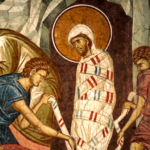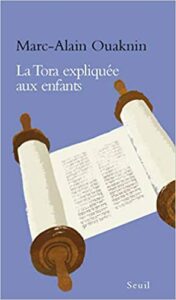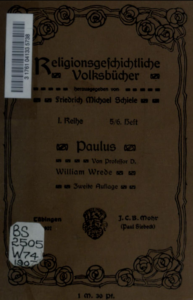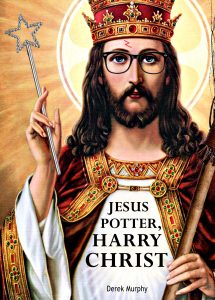Nanine Charbonnel now asks how the understanding of how the gospels have been written should affect how we read them. Metaphors abound in her discussion of how to read metaphorical narratives. Think of Hebrews 10:20, where readers are directed to enter the divine presence through the veil of the inner sanctuary, a veil which itself represents the flesh of Jesus.
 The book is there, then, but the work is still hidden. It is absent, perhaps radically so; in any case it is concealed, obfuscated by the evident presence of the book, behind which it awaits the liberating decision, the “Lazare, veni foras.”
The book is there, then, but the work is still hidden. It is absent, perhaps radically so; in any case it is concealed, obfuscated by the evident presence of the book, behind which it awaits the liberating decision, the “Lazare, veni foras.”
To make this stone fall seems to be reading’s mission: to render it transparent, to dissolve it with the penetrating force of the gaze which unimpeded moves beyond. There is in reading, at least at reading’s point of departure, something vertiginous . . . But there is more; and what makes the “miracle” of reading still more singular . . . .To roll back the stone, to obliterate it, is certainly something marvelous, but it is something we achieve at every moment in everyday language. At every moment we converse with Lazarus, dead for three days — or dead, perhaps, since always. In his well-woven winding sheet, sustained by the most elegant conventions, he answers us and speaks to us within ourselves.
— Blanchot, The Space of Literature, 195
Following on from Maurice Blanchot who saw Lazarus in his burial cloths as the incarnation of a book and Jesus’ command for Lazarus to “Come forth!” as the act of reading, NC runs with an image of strips of cloth as the surface material for writing and the need for readers to find new ways to understand those words. (Did scribes also write on linen? I am not aware of the practice so I will only touch on a few passages in the closing pages: my grasp of French is too elementary to read with confidence the nuances and subtleties that are embedded in the metaphors in these closing pages.)
Peter ran to the tomb and, bending down, saw only the strips of cloth that had been used to bind the body of Jesus: Luke 24:12 (C’s text has a small error here with the Greek word used in our manuscripts). In John 20:5 another disciple sees the same bands of linen that had been used to wrap Jesus lying on the ground. In 2013 Father Antoine Adam delivered an Easter homily on radio France-Culture in which he said the cloth is rolled up, like the book that has to be unrolled, to see the impression of the face of Jesus left on it, like the body of Scripture, for Jewish Scriptures are a corpus.
The phylacteries or tefillin were known in early times (Matthew 23:5) and the leather strips contained writings. Leon of Modena described the way these strips would be bound so that they formed the letter yod on the left arm and were inscribed with the letter shin on the forehead, which, one might note, are the first two letters of Jeshua. One would like to propose the image of a comparison between the burial cloths and the tefillin strips, both are left lifeless on the floor after the resurrection of and transformation of the old body.
It is easy to over-reach in the world of metaphors. I think NCs suggestion of Maurice Mergui’s comment on the striking of Jesus with the reed (the same word is used to translate the writing instrument — Matthew 27:30) to signal Jesus being struck according to Scripture, that is, by midrash. When we read in the New Testament the phrase “in/by the spirit” (e.g. Acts 20:22-23) should we always think of the Holy Spirit or is there sometimes an allusion to “the spirit of the author” or midrashic interpretation?
 NC finds an interesting explanation by Marc-Alain Ouaknin in La Tora expliquée aux enfants.
NC finds an interesting explanation by Marc-Alain Ouaknin in La Tora expliquée aux enfants.
In the Torah, “creation of the world” does not mean “creation of the physical world”, the moment when matter came into being. No, it means the creation of the world in a story: it is the first time that a written text is considered a creation of the world. Not the first time that a written text tells of the creation of the world, but the first time that men consider that writing is a way of “creating: “I write, therefore I create!” Writing becomes a tool by which the world is created ‘in stories’.
Excerpt From: Marc-Alain Ouaknin. “The Torah Explained to Children.” Apple Books. (I have quoted a little more than NC quotes on p. 447. As per John 6:63, NC recalls, the words spoken are spirit and life. )
Pentecost, the anti-Tower of Babel
The punishment of the confusion of languages at the Tower of Babel is reversed in the midrash of Pentecost. Here an author has set down in a text a fortuitous miracle of comprehension without a mediator. But without a mediator has something else become hidden, lost? NC concludes this chapter with the words of Michel Serres:
The new meaning spread everywhere starting from wind and noise. Not a single language translated in several languages, but several spoken and several heard at the same time. . . . If the orator is heard as is, the network is decentered, even locally: there is no longer an intercepter, no longer a crossroads or intermediate; there is no longer a town; Hermes, the father of Pan, died on the Pentecost.
(The Parasite, from pages 41 and 43)
And that brings NC to the observation that it is the Paraclete that is introduced in the gospels as the new interpreter — a subject for a future study.
Conclusion
Other personnages de papier
Continue reading “Conclusion: Nanine Charbonnel, Jésus-Christ, sublime figure de papier”


